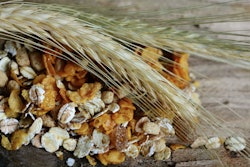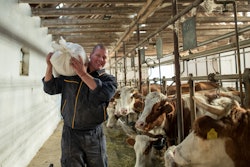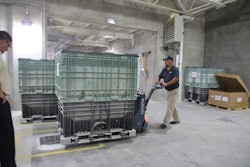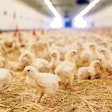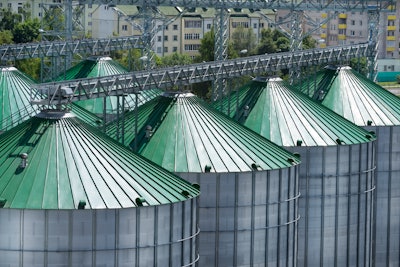
The U.K.’s Department for Environment, Food and Rural Affairs (Defra) has issued guidance on how to reduce the risk of disease from animal feed storage units.
The guidance was issued to reduce the potential risk of disease from on-farm feed storage and to keep animals healthy and productive.
“Regular cleaning of feed storage is vital to maintain the health of your animals. You will also reduce the potential risk of bovine spongiform encephalopathy (BSE) from old, contaminated feed residue in storage units,” Defra said on its website.
Where to store your animal feed
Options include:
- Storage bins or silos for bulk materials, which may be sealed or unsealed
- Bunkers or bays for storing bulk materials on the floor, usually separated by concrete or wooden partitions
- Sheds or other farm stores for bagged ingredients
- Feed stored in heaps in unsealed buildings
If you store feed in a silo used before August 1, 1996
You should decommission and replace any silos you used before August 1, 1996, to store animal feed. This will eliminate the potential risk of BSE from traces of old feed trapped in joints and grooves. A very small amount of contaminated feed can infect an animal with the BSE agent.
If you cannot replace your old silo, you should arrange for it to be cleaned as soon as possible. Make sure you:
- Remove all remnants of old feed, with dry or vacuum cleaning methods, if possible, followed by disinfectant
- Clean the outer and inner surfaces of the silo and your floor (if you cannot access inner surfaces, for example on closed storage, dismantle the silo to clean it, if possible)
- Clean material and dust from the overhead steelwork downwards, until you cannot pick up anymore dust
- Dry your silo of any moisture before you use it to store fresh feed
You should use a professional cleaning service, if cleaning your silo is likely to be difficult or hazardous to the health and safety of yourself and others.
Clean all feed storage facilities
You should have a system in place to make sure you empty and clean all of your feed storage units and equipment regularly.
Before you receive new consignments of animal feed, you should empty and clean your storage units to avoid cross contamination. If this is not possible each time you refill, aim to do it at least every 12 months before a refill.
Your cleaning method should:
- Minimize the risk of contamination
- Avoid introducing moisture, wherever possible
- Not generate dust, which could result in bacteria developing
- Include vacuum cleaning as the preferred method to remove old feed residues
You should only use wet cleaning methods if necessary, for example for appropriate disinfection. After wet cleaning, dry any equipment and machinery that will have contact with dry product. Only use suitable chemicals for cleaning surfaces that your feed products will have contact with. Make sure you follow the manufacturer’s instructions on cleaning products.
You can use the Defra-approved disinfectant list to help you find a suitable product.
Remove residue from previous feed consignments
Use dry or vacuum methods to completely remove feed residues. Follow this with disinfectant for good hygiene. This is the preferred method, but you can use any that will completely remove lodged material and dust.
When you clean silos and bins, pay particular attention to joints and grooves where old feed can become trapped.
You should also clean troughs and hoppers thoroughly to remove residues of previous feed and prevent cross-contamination.
Disinfect and dry your units
Use a disinfectant that also acts as detergent if you use wet cleaning methods. You will only need one application.
Dry your storage facility to remove any moisture before you refill it.
Organize your storage area
Consider the type and condition of your stored products. Your storage area should keep your products clean, dry and orderly.
Moisture can cause bacteria to multiply, so you should keep your products dry (except those products that are meant to be moist). You should also minimize any potential movement of dust between storage compartments.
Organize your storage facilities to allow:
- Enough space to separate each product
- Each product to be identified easily
Keep a record of your cleaning activities
Record details of all cleaning activities for the production and animal feed storage areas on your farm.
For each cleaning activity, you should include the:
- Date and time
- Location
- Areas or equipment cleaned
- Cleaning products you used
You should keep your records for at least 7 years.


